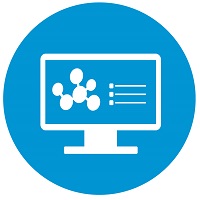Back
Preclinical Development – Chemical
Session: Symposium: Bridging The Cross-Functional Silos To Expedite Compound Progression Into The Clinic (CE)
Model Informed Drug Development: A Key Metric to Expedite Compound Progression in Drug Discovery
Monday, October 17, 2022
10:00 AM – 10:30 AM ET
Location: 253 C
.jpg)
Shriram M. Pathak, PhD
Senior Research Fellow, Drug Development Consulting
Quotient Sciences, UK
Nottingham, England, United Kingdom
Speaker(s)
The success of selecting a right drug candidate that is ‘developable’ and ensuring a rapid progression toward the first-in-human clinical testing depends upon the synchronized efforts and actions of multidisciplinary sciences. Modeling and simulation (M&S) has emerged as a key metric to inform crucial drug development decisions and essentially can support throughout the development lifecycle of a drug. Specifically, Physiological based Pharmacokinetic (PBPK) modeling has already proven to be a potential resource in reducing and refining the clinical trials to study drug-drug interactions and drug effects in special populations. However, with an unique competence of the PBPK models to separate the drug information from the systemic physiological parameters, this modeling framework has much more to offer to expedite candidate progression within the drug discovery setup.
Introduction of PBPK modeling early in the programme can help maximize the utilization of drug’s early physchem, in-vitro and pre-clinical dataset to inform downstream decision-making. For instance, at candidate selection stages, M&S can provide valuable insights about the key drug attributes viz. selection of an appropriate solid state (amorphous vs crystalline polymorph); requirement of particle size reduction; possible food effect; membrane permeation; blood binding and tissue distribution parameters etc. allowing for maximum leverage from the limited dataset available and thereby ensuring program is well prepared for entering the clinical phase. Modeling techniques can also help understanding the drivers of reduced oral bioavailability of early drug candidates and can inform downstream formulation decision-making so that the efforts can be focused on the correct techniques to provide meaningful improvements in in-vivo performance, and at the same time, avoiding the risk of jumping to overly complex formulations which may add an unnecessary time and cost to the drug development process.
This session will introduce the current state of knowledge and present real time case studies demonstrating how an optimum use of PBPK modeling techniques can support a ‘rationale’ drug development, thereby expediting the process of moving potential lead candidates from discovery to the clinic and subsequent commercialization.
Introduction of PBPK modeling early in the programme can help maximize the utilization of drug’s early physchem, in-vitro and pre-clinical dataset to inform downstream decision-making. For instance, at candidate selection stages, M&S can provide valuable insights about the key drug attributes viz. selection of an appropriate solid state (amorphous vs crystalline polymorph); requirement of particle size reduction; possible food effect; membrane permeation; blood binding and tissue distribution parameters etc. allowing for maximum leverage from the limited dataset available and thereby ensuring program is well prepared for entering the clinical phase. Modeling techniques can also help understanding the drivers of reduced oral bioavailability of early drug candidates and can inform downstream formulation decision-making so that the efforts can be focused on the correct techniques to provide meaningful improvements in in-vivo performance, and at the same time, avoiding the risk of jumping to overly complex formulations which may add an unnecessary time and cost to the drug development process.
This session will introduce the current state of knowledge and present real time case studies demonstrating how an optimum use of PBPK modeling techniques can support a ‘rationale’ drug development, thereby expediting the process of moving potential lead candidates from discovery to the clinic and subsequent commercialization.
Learning Objectives:
- Appreciate the value and purpose of key in-silico (viz. PBPK) modeling techniques in early drug development programmes.
- To introduce the current state of knowledge and highlight how PBPK modeling can be used to risk assess lead compounds prior entering the clinical phase.
- Discuss the current knowledge gaps and critical challenges within the field and help exchanging of ideas to move this fundamental science further.

